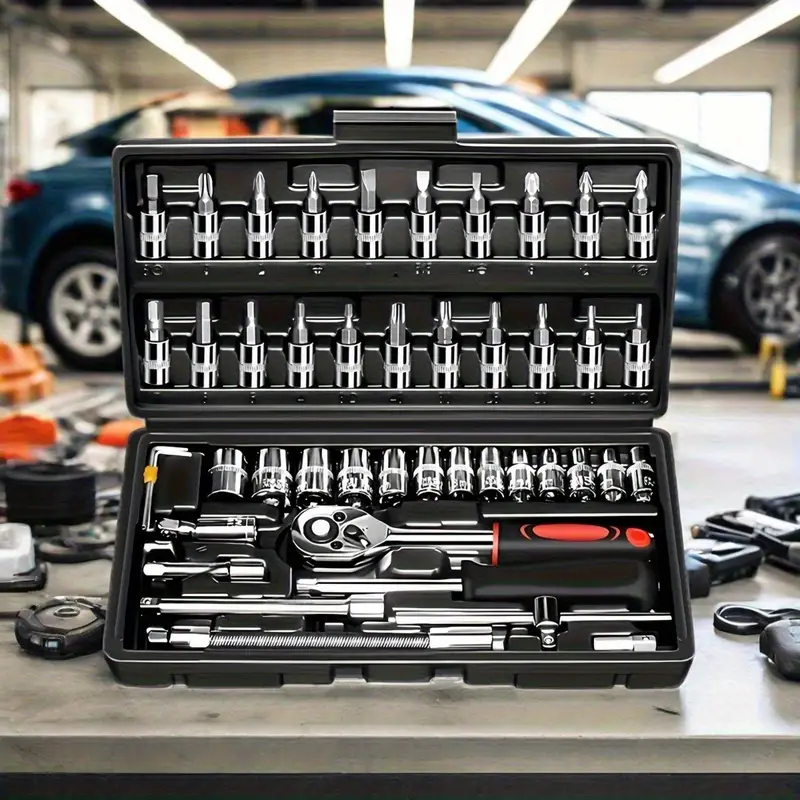Automotive Maintenance Basics: Complete Guide
Understanding automotive maintenance is essential for every vehicle owner, whether you’re a complete beginner or someone looking to expand your mechanical knowledge. Proper vehicle maintenance not only ensures your safety on the road but also extends your car’s lifespan and saves you money in the long run. This comprehensive guide will walk you through fundamental automotive principles, from basic safety protocols to advanced troubleshooting techniques.
Modern vehicles are complex machines with interconnected systems that require regular attention and care. While professional mechanics handle major repairs, understanding basic maintenance principles empowers you to perform routine tasks, identify potential problems early, and communicate effectively with service professionals. The knowledge gained here will help you become a more informed car owner and potentially save thousands of dollars over your vehicle’s lifetime.
Introduction, Safety and Tools
Fundamental Safety Rules for Vehicle Work
Safety should always be your top priority when working on any vehicle. Never work alone under a car or when performing potentially dangerous tasks – having someone nearby can be lifesaving in case of emergencies. Always wear proper eye protection when working with chemicals, grinding, or dealing with pressurized systems.
Avoid loose clothing or long hair near moving parts, as these can easily get caught in belts, fans, or other rotating components. Be particularly cautious around the engine bay when the vehicle is running. Keep your workspace clean and well-lit to prevent accidents and ensure you can see potential hazards clearly.
Chemical safety is crucial in automotive work. Many fluids used in vehicles are toxic, corrosive, or flammable. Always have a water source nearby for emergency rinsing, and familiarize yourself with the proper disposal methods for used fluids. Never mix different types of chemicals unless specifically instructed to do so.
Emergency Preparedness and First Aid
Every garage or workspace should be equipped with essential emergency equipment. Keep a fire extinguisher rated for chemical and electrical fires within easy reach, and ensure everyone knows its location. A well-stocked first aid kit should include bandages, antiseptic, burn gel, and emergency contact information.
Post emergency phone numbers prominently in your workspace, including local emergency services, poison control, and your personal emergency contacts. Consider taking a basic first aid course to better prepare yourself for potential accidents.
Common Mechanic Tools
A basic tool collection worth around $200 can handle most home automotive tasks. Essential tools include various wrenches (combination wrenches, adjustable wrenches, socket sets), screwdrivers in multiple sizes and types, and a quality hammer for gentle persuasion work.
Modern diagnostic tools are increasingly important. A basic code reader or OBD-II scanner can identify engine problems and save you diagnostic fees at repair shops. Other essential tools include a tire pressure gauge, battery tester, and basic electrical testing equipment like a multimeter.
General Vehicle Maintenance
Importance and Use of Owner’s Manual
Your vehicle’s owner’s manual is the most valuable reference for specific maintenance requirements. This often-overlooked resource contains a detailed maintenance schedule with recommended intervals for oil changes, tire rotations, and other crucial services tailored to your specific vehicle.
The manual also provides specifications for fluids, parts, and procedures unique to your car’s make and model. Different vehicles have varying requirements, and following manufacturer recommendations helps maintain warranty coverage and optimal performance.
Vehicle Fluid Level Checks
Regular fluid monitoring is one of the most important maintenance tasks you can perform. Engine oil should be checked at every fuel fill-up using the dipstick, typically marked with a bright yellow handle. Check oil when the engine is warm but not hot, and ensure the vehicle is on level ground for accurate readings.
Coolant levels require special attention – never check when the engine is hot, as the system is under pressure and can cause severe burns. Low coolant levels often indicate leaks that need immediate attention. Your owner’s manual specifies the correct coolant type and mixture ratio for your vehicle.
Other critical fluids include windshield washer fluid and transmission fluid. Each has specific checking procedures and locations detailed in your owner’s manual. Regular monitoring helps identify leaks early and prevents costly damage.
Fuse Inspection and Testing
Fuses protect electrical circuits from overload damage. They can be tested visually by looking for a broken filament inside the clear plastic housing, or more reliably with a test light or multimeter. When testing fuses, remove only one at a time to avoid confusion about placement.
Understanding your vehicle’s fuse panel layout helps troubleshoot electrical problems quickly. Most vehicles have multiple fuse panels – typically one in the engine compartment and another inside the passenger cabin.
Belt and Hose Examination
Visual and tactile inspections of belts and hoses can prevent roadside breakdowns. Belt squealing often indicates tension problems or wear. Look for cracks, fraying, or glazing on belt surfaces. Modern serpentine belts should be replaced at manufacturer-recommended intervals, even if they appear acceptable.
Hoses should be inspected for cracks, swelling, or leaks. Pay particular attention to connection points where failures commonly occur. Squeeze hoses gently to check for softness or brittleness that indicates deterioration.
Lighting System Control
Proper lighting is essential for safety and legal compliance. Regularly check both interior lighting (dashboard illumination) and exterior lighting (headlights, taillights, turn signals, hazard lights). Many modern vehicles have sophisticated lighting systems that require specific bulb types.
Dashboard warning lights serve as your vehicle’s communication system. Familiarizing yourself with common symbols helps you respond appropriately to potential problems.
Air Filter Inspection and Replacement
Air filter replacement is one of the most cost-effective maintenance tasks you can perform. A simple visual inspection reveals when replacement is needed – if you cannot see light through the filter, it’s time for a new one. Clean air filters improve fuel economy and engine performance while preventing dirt from damaging internal components.
Dashboard Signals and Warning Lights
General Interpretation of Warning Light Colors
Understanding warning light color coding can help you prioritize responses appropriately. Red lights typically indicate urgent problems requiring immediate attention – you should pull over safely as soon as possible. Orange or yellow lights signal issues that need attention but usually allow you to drive to a repair facility.
Blue lights generally indicate informational status, such as high beam activation. However, always consult your owner’s manual for vehicle-specific meanings, as manufacturers may use different color schemes.
Important Warning Light Meanings
The brake warning light (typically red) often relates to brake fluid levels or parking brake engagement. The oil change light (usually orange or yellow) indicates routine maintenance is due, while the check engine light (red or yellow) relates to emissions control systems and diagnostic trouble codes.
Each warning light has specific meanings and appropriate responses. Some indicate immediate safety concerns, while others signal maintenance intervals or minor system malfunctions.
Turn Signal and Hazard Light Verification
Turn signals and hazard lights should flash at consistent intervals. Irregular flashing patterns often indicate bulb failure or electrical circuit problems. These safety-critical systems require immediate attention when malfunctioning.
Tire Management
Understanding Tire and Vehicle Specifications
Tire information appears in two locations: manufacturer specifications on the tire sidewall and vehicle manufacturer recommendations in the door jamb and owner’s manual. The recommended tire pressure is found on the vehicle’s specification sticker, not on the tire itself.
Understanding load ratings, speed ratings, and size specifications helps ensure proper tire selection for replacement.
Checking and Adjusting Tire Pressure
Tire pressure is measured in PSI (pounds per square inch) or KPA (kilopascals). Use a quality tire pressure gauge for accurate readings. Check pressure when tires are cold, as driving heats tires and increases pressure readings.
Proper tire pressure improves fuel economy, tire longevity, and vehicle handling while reducing the risk of tire failure.
Wheel Alignment Importance
Poor wheel alignment causes rapid tire wear and vehicle handling problems. Key alignment angles include camber, toe, and caster. Signs of alignment problems include uneven tire wear patterns and the vehicle pulling to one side while driving straight.
Using Tread Wear Indicators
Built-in tread wear indicators help assess tire condition. These raised bars appear in tire grooves and become visible when tread depth reaches unsafe levels. When these indicators are flush with the tread surface, tire replacement is necessary.
Flat Tire Changing Steps
Consult your owner’s manual for vehicle-specific jack points and spare tire location. Always loosen lug nuts before lifting the vehicle, use proper lifting points to avoid damage, and tighten lug nuts after lowering the vehicle to the ground.
Internal Combustion Engine and Oil
Engine Operating Principles
The internal combustion engine operates on a four-stroke cycle: intake, compression, combustion, and exhaust. Understanding these basic principles helps you appreciate the importance of proper maintenance and quality components.
Engine Oil Role and Selection
Engine oil lubricates moving parts to reduce friction and wear. Oil specifications including API (American Petroleum Institute) and SAE (Society of Automotive Engineers) ratings are specified in your owner’s manual. Using the correct oil type and viscosity is crucial for engine longevity and performance.
Cooling System
General Maintenance and Coolant Changes
The cooling system requires periodic maintenance including coolant replacement at manufacturer-specified intervals. Different coolant types are not always compatible, so follow manufacturer recommendations exactly.
Coolant Level Verification
Regular coolant level checks help prevent overheating damage. Remember: never open a hot cooling system, as pressurized coolant can cause severe burns. Check levels when the engine is completely cool.
Pressure Testing for System Leaks
Cooling system pressure testers can be rented from auto parts stores. Never exceed the pressure rating stamped on the radiator cap. Pressure testing helps identify leaks that might not be visible during normal operation.
Fuel System
Carburators vs Fuel Injection Systems
Modern vehicles typically use fuel injection systems controlled by the vehicle’s computer. These systems are more efficient and reliable than older carburetor systems but require different maintenance approaches.
Essential Role of Fuel and Air Filters
Filters protect the fuel system and engine from contaminants. Regular replacement prevents damage to expensive components and maintains optimal performance.
Electrical System
Main Components: Battery and Alternator
The battery provides electrical power when the engine is off, while the alternator recharges the battery and powers electrical systems when the engine runs. Understanding this relationship helps diagnose charging system problems.
Ignition System Operation
The ignition system creates precisely timed sparks to ignite the air-fuel mixture in each cylinder. Proper timing and spark quality are essential for engine performance and emissions control.
Spark Plug Gap Adjustment
Incorrect spark plug gaps can cause misfiring and poor engine performance. Use a gap gauge to verify proper spacing according to manufacturer specifications.
Jump Start Procedure
When jump-starting a vehicle, always connect cables in the proper sequence and remove them in reverse order. Connect negative cables last and remove them first to minimize sparking near the battery.
Transmission and Drivetrain
Transmission Function and Gear Ratios
The transmission adjusts the relationship between engine speed and wheel speed, allowing the engine to operate efficiently across various driving conditions.
Drive Shaft and Differential
The drive shaft transfers power from the transmission to the differential on rear-wheel and four-wheel drive vehicles. The differential allows wheels on the same axle to rotate at different speeds during turns.
Different Transmission Types
Understanding front-wheel drive, rear-wheel drive, and four-wheel drive configurations helps you maintain each system properly and understand their different characteristics and maintenance requirements.
Braking System
How Brakes Slow the Vehicle
Brakes convert motion energy to heat energy through friction. The hydraulic brake system multiplies the force you apply to the brake pedal, allowing relatively small pedal pressure to create powerful braking force.
ABS System
Anti-lock Braking Systems prevent wheel lockup during emergency braking, helping maintain vehicle control and steering capability.
Brake System Inspection Procedure
Brake system inspection requires model-specific service manual procedures. This safety-critical system demands professional attention for major repairs.
Auto Repair Industry Overview
Service Writer Role and Hierarchy
Service writers act as intermediaries between customers and technicians, translating problems and recommendations between parties with different levels of technical knowledge.
Potential Issues with Commissions and Communication
Commission-based pay structures can create incentives for unnecessary service recommendations. Communication breakdowns between customers, service writers, and technicians can lead to misunderstandings and unsatisfactory repairs.
Alternative Approach
Some repair shops emphasize direct customer-technician communication without commission incentives, focusing on building trust through transparency and avoiding unnecessary services.
Used Car Buying Tips
Considering Total Ownership Cost
The purchase price represents only the beginning of vehicle ownership costs. Insurance, fuel, maintenance, and repairs significantly impact total ownership expenses. Insurance rates vary dramatically between drivers and vehicle years.
Finding Vehicles for Sale
Online resources like AutoTrader, Cars.com, and Craigslist provide extensive vehicle listings. Each platform has advantages and disadvantages in terms of selection and seller types.
Evaluating Vehicle Value and Understanding Terms
Tools like Kelly Blue Book help determine fair market values. Understanding terms like “OBO” (or best offer) and “salvage title” (indicating significant previous damage) helps evaluate listings effectively.
Key Questions for Sellers
Ask about vehicle features, history (including smoking), and price negotiability. Gather as much information as possible before viewing the vehicle.
Personal Inspection and Road Test Importance
Check lighting, battery condition, and spare tire availability. Examine paint from multiple angles for evidence of bodywork. Test handling, acceleration, and braking during the road test.
Professional Mechanic Inspection
A trusted mechanic can identify problems invisible to non-experts and use diagnostic tools to read computer error codes. Confident sellers typically welcome professional inspections.
Negotiation Strategies
Base offers on KBB values and mechanic recommendations. Use discovered repair needs to justify lower offers with specific cost estimates.
Purchase Completion Steps
The seller handles title notarization. You must then transfer the title to your name and obtain license plates at the DMV or independent title service. Add the vehicle to your insurance policy within ten days.
This comprehensive guide provides the foundation for understanding automotive maintenance and making informed decisions about your vehicle. Regular maintenance, proper safety procedures, and informed purchasing decisions will serve you well throughout your automotive ownership experience.
11 Tips for Beginner Car Maintenance to Keep in Top Shape
Beginner s Auto Maintenance & Repair
A Driver’s Guide to Car Maintenance – For Beginners



